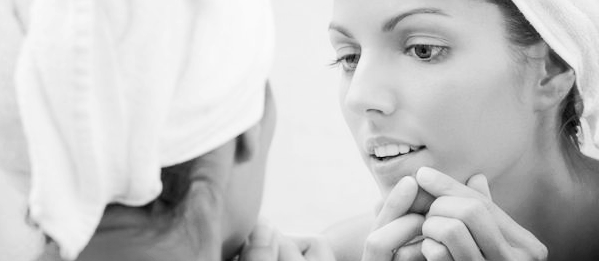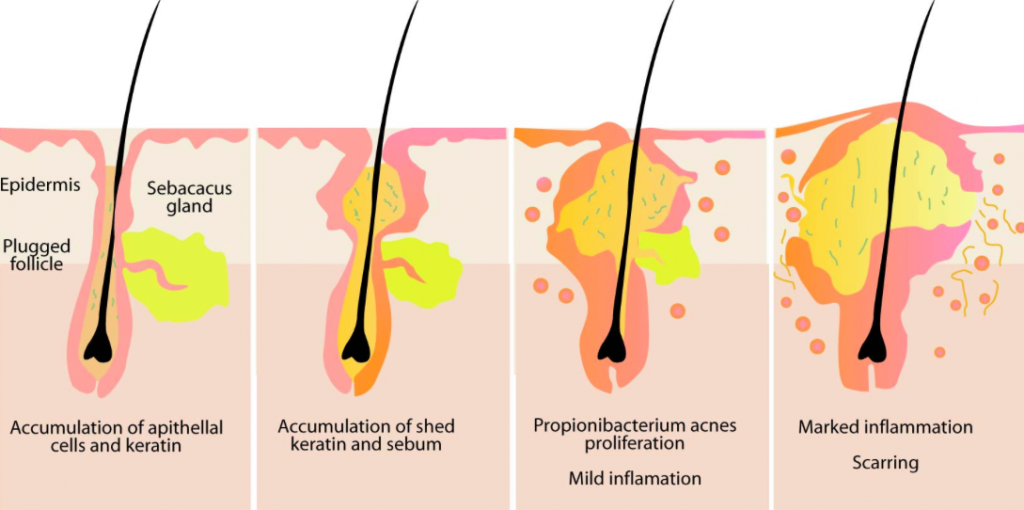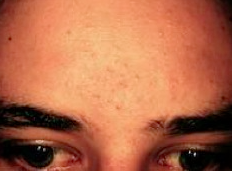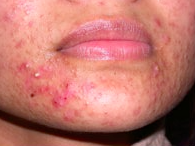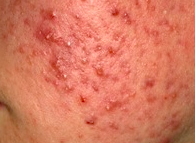WHAT IS ACNE?
Acne Vulgaris is an inflammatory condition involving the hair follicles of the face chest and back affecting teenagers of puberty age but not restricted to, and may affect adults more commonly in women. Symptoms of Acne appear on the skin as blackheads, whiteheads, pimples associated with tenderness and infection and occasionally as cysts, sometimes resulting in scarring.
Acne may have severe psychological and social effects particularly when it presents during puberty when self-image is important to feeling accepted and fitting in.
CAUSES
Acne is multifactorial condition, that is, there are a number of factors contributing to the condition.
Puberty is a time when body changes into adulthood and this change is regulated by the hormone androgen.
Androgen stimulates the sebaceous glands to produce more sebum in the skin.
The purpose of sebum is to waterproof the skin keeping supple, and if a layer of dead cells build up at the opening the pore it becomes blocked causing a build up of oil forming a blackhead or comedone.
If this becomes inflamed it results in a pimple where bacteria can grow. This mixture can leak into nearby tissues causing redness swelling and pus.
Acne is described into categories of Mild Moderate and Severe.
5% of teenagers suffer from acne often clearing up around the age of 20, but some people still suffer into their 30’s leaving sufferers with scars or darker areas of pigment where the lesions have been.
CAUSES SUMMARY
-
Genetic- Family members have had acne
-
Hormonal –higher levels of androgenic hormones due to Polycystic Ovaries, Psychological issues or rare diseases such as Cushing’s disease or and enzyme deficiency
-
Environmental factors high humidity. Skin care products containing lanolin, lauryl alcohol, stearates, vegetable oils, petrolatum ,or occupations where there is exposure to industrial products like cutting oils.
-
Certain medications such as oral corticosteroids by increasing yeast proliferation in the follicle, lithium based antidepressants, B6 B12 vitamins or those containing iodides, or bromides.
-
Diet, some studies have shown diets high in protein, fat, sugar and dairy have an adverse effect.
TREATMENT OPTIONS
MILD ACNE < 30 lesions
-
Washing the affected area twice day with a mild cleanser containing salicylic acid, benzoyl peroxide azelaic acid, hydrogen peroxide or tea tree products.
-
Avoid oily cosmetics and discontinue use if irritation occurs but be aware that these products may cause dryness particularly if in the first 2-4 weeks.
-
Applying topical agents such as antibiotic creams or solutions and retinoids such as tretinoin.
-
Laser and light based therapies may also be helpful in mild to moderate acne. The light may be delivered with a senstising agent-photodynamic therapy. Radio frequency has also shown positive results.
MODERATE ACNE 30-125 lestions
-
Noticeably more pimples than mild acne, which are inflamed and filled with pus.
-
A combination of oral and topical applications are helpful and must be under the care of a Dermatologist who will prescribe for a 6 month period
-
Tetracycline and antiandrogens such as oestrogen in the form of the pill may help in stabilising the condition.
SEVERE ACNE >125 lesions
-
May include cysts, often inflamed papules, pustules and nodules and scar forming.
-
Oral isotretinions
-
High doses of oral antibiotics maybe administered
-
Antiandrogens eg; estrogen and progesterone found in the contraceptive pill for females.
-
Intralesional steroid injections can be used to reduce cysts
In mild, moderate and severe acne it is vital the lesions are not picked or scratched increasing the risk of further infection and scarring.
The deep pits or scarring post acne is and unfortunate end point and treatment modalities such as dermabrasion.chemical peeling, light and laser therapies may be of benefit. Surgical excision and dermal fillers are also current treatment options for scarring.
Approaching treatment wholistically including dietary management will assist in optimising a successful outcome in the treatment of acne. A number of factors should be considered when investigating treatment options for acne; including age, sex, environmental factors, the severity of the acne, duration of suffering and what treatments have already been tried. Response to treatments may be prolonged taking months, so it is important to be patient and optimistic when managing the symptoms of acne. Acne treatment sees optimal results when treated with combination therapies.
Key to understanding medical terms used and actions-
Benzoyl peroxide -helps remove the layer of dead cells on the surface of the skin preventing the pore from getting blocked allowing the sebum to escape.
May irritate causing redness and itching, using higher concentrations of benzoyl peroxide aren’t more efficacious but can increase the adverse side effects.
Topical Antibiotics- where bacteria is present antibiotics have and ant inflammatory effect, not suitable for long term use due to the bacteria becoming resistant.
Oral antibiotics- tetracycline and erythromycin have adverse side effects such as dizziness, digestive problems, allergic reactions and not suitable for women who are pregnant or breastfeeding.
Salicylic Acid –anti-inflammatory It works as a keratolytic, bacteriocide and comedolytic agent by causing the cells of the epidermis to shed more readily, opening clogged pores and neutralising bacteria.
Tea tree- antimicrobial
Retinoids- a derivative of Vitamin, A assisting in both inflammatory and non inflammatory acne
Not to be used when pregnant
Adverse effects are redness burning and itching. They may also increase photosensitivity when exposed to the sun.
Androgen- male sex hormone produced in larger quantities when entering puberty.
Antiandrogens- adverse side effects of hormone products such as headaches, nausea and increase the risk of deep vein thrombosis.
Laser and light based therapies- decrease sebum production by destroying the sebaceous gland and killing the bacteria causing infection. Some antibiotics create photosensitivity in the skin and this must be considered prior to undertaking treatments including light based therapies.
Radio Frequency- excellent results however treatment can be painful and topical anaesthesia may need to be administered.
